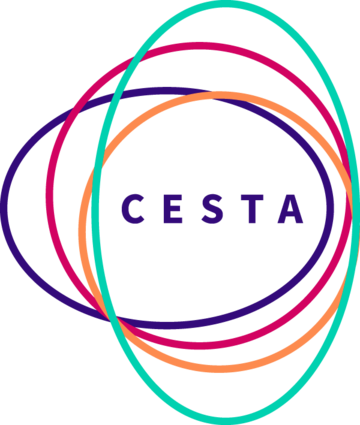Blog
A Deeper Dive: A RA's first experience with textual analysis

By
Huanvy Phan
This week, I took a first leap with some more text visualization and dove deeper than last week’s word cloud. This was my first experience with text analysis, and it was interesting to say the least. With guidance from CESTA researcher and project manager Gabriel Wolfenstein, I used tools such as Voyant to find connections and inspire further analysis of the RA reflections. Projects within CESTA’s Literary Lab have used similar processes of turning literature into data and using natural language processing and computational approaches to find deeper insights, meanings, and patterns in large quantities of text.

One of the tools that I used was a line graph to depict the distribution of a word’s occurrences across multiple documents. The numbers on the x-axis correspond to each of the RA’s reflections, and the y-axis shows the number of times a certain word appeared in that reflection. Each line in the graph is colored according to the word it represents, as depicted in the legend.and the legend at the top of the graph displays which words are associated with which colors.
This tool was useful for comparing which keywords appeared more often in the individual reflections, and analyzing these trends can show whether a low usage of one word in a reflection correlated to low usage of similar words. For example, in reflection #19, we can see that “humanities” and “digital” only appeared once, while other documents such as #6 have frequencies as high as 18 and 16, respectively.

Another tool that I explored was a network graph where words that often appeared side-by-side, also known as “collocates”, are connected by lines, with thickness related to frequency of co-occurrences. The key words are in orange, and they are linked to collocates in blue. This type of network visualization shows what words are frequently linked to each other, revealing similar connections in thoughts and ideas across the reflections.
While I am still new to the world of textual analysis, I am beginning to see the ideas and concepts that I didn’t even know were lurking in my mind and writing. I’m incredibly excited to delve deeper into this exploration for the remainder of this summer and beyond!
Stay tuned to hear more about what the RAs have to say!
From the writer’s desk
I’m Huanvy Phan, a rising sophomore majoring in Asian American Studies and Philosophy. I’m working as a Communications Assistant this summer, which involves helping with the day-to-day intercommunications between the RAs and managing this blog. I’m beyond thrilled to be working with CESTA and I’m eager to dive into the world of digital humanities.